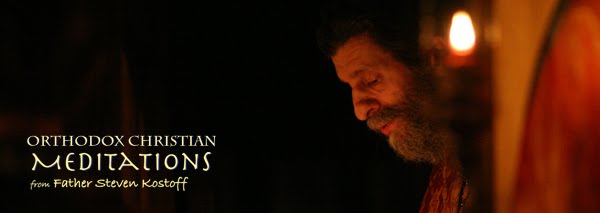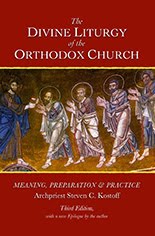Dear Parish Faithful,
I was going to prepare a Monday Morning Meditation, but before I began to write, I first came across this interesting article that I would like to share with everyone. It is quite fascinating to read, absorb and analyze what Ross Douthat is saying about the American religious landscape from the perspective of living within the Tradition of the Orthodox Church. It is clearly a bit intimidating to realize our "minority status" (not only in terms of numbers, but of an over-all approach and worldview) within that very religious landscape; but the challenge to avoid the pitfalls enumerated in the article are good ones to embrace, in order to "test" our commitment and the reality behind that commitment to "the faith once and for all delivered to the saints." Please share any further comments that you may have.
Ross Douthat is clearly an intriguing presence on the staff of New York Time Op-Ed columnists. He is atypical in that he is clearly a Christian believer (Roman Catholic) and challenges the usual "secularism" - tinged by condescension - that pervades so much writing on religious themes that one finds in the NYT. He does not hide his Christian Faith, but must of course present his position within an acceptable style of discourse that suits his considerably-sized and probably highly-secularized audience. His presence just may be a commitment to "diversity" that is seen as essential these days; though he probably remains something of a "voice crying in the wilderness."
Fr. Steven
The beginning of the article appears below. Follow the link at bottom to continue reading.
_____
The New York Times
March 8, 2010
OP-ED COLUMNIST
Mass-Market Epiphany
By ROSS DOUTHAT
Mysticism is dying, and taking true religion with it. Monasteries have dwindled. Contemplative orders have declined. Our religious leaders no longer preach the renunciation of the world; our culture scoffs at the idea. The closest most Americans come to real asceticism is giving up chocolate, cappuccinos, or (in my own not-quite-Francis-of-Assisi case) meat for lunch for Lent.
This, at least, is the stern message of Luke Timothy Johnson, writing in the latest issue of the Catholic journal Commonweal. As society has become steadily more materialistic, Johnson declares, our churches have followed suit, giving up on the ascetic and ecstatic aspects of religion and emphasizing only the more worldly expressions of faith. Conservative believers fixate on the culture wars, religious liberals preach social justice, and neither leaves room for what should be a central focus of religion — the quest for the numinous, the pursuit of the unnamable, the tremor of bliss and the dark night of the soul.
Yet by some measures, mysticism’s place in contemporary religious life looks more secure than ever. Our opinion polls suggest that we’re encountering the divine all over the place. In 1962, after a decade-long boom in church attendance and public religiosity, Gallup found that just 22 percent of Americans reported having what they termed “a religious or mystical experience.” Flash forward to 2009, in a supposedly more secular United States, and that number had climbed to nearly 50 percent.
In a sense, Americans seem to have done with mysticism what we’ve done with every other kind of human experience: We’ve democratized it, diversified it, and taken it mass market. No previous society has offered seekers so many different ways to chase after nirvana, so many different paths to unity with God or Gaia or Whomever.
Continue reading . . .
.
Continue reading . . .
.







